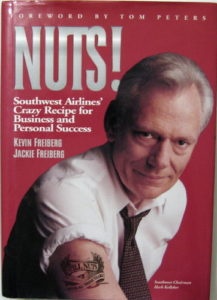By: Robert Avsec, Executive Fire Officer
I just finished reading a powerful piece of prose from a previously unheard from source, Fire Captain Andrea Hall with the South Fulton County (Georgia) Fire Rescue and president of IAFF Local 3920. After reading her piece, 7 ways to develop future fire service leaders across the generational chasm, I was “motivated” to once again share this “oldie but goodie.”
I’ve been fortunate to attend many good—and some not so good—leadership and management courses, classes, seminars, etc., in the course of my various careers. One common thread always seemed to be that one of the key functions of a leader/manager/supervisor (take your pick) is to motivate their employees or members. But can we really motivate another individual?
I don’t think that we can. We can teach people how to do their job safely, effectively and efficiently. We can provide a sound organizational structure with policies and procedures that are congruent with an organization’s vision, mission, and values. And we can attempt to modify undesirable individual behavior, when necessary, using progressive discipline. But I don’t think that we can make anyone do something that they don’t want to do.
We can, however, create an “atmosphere” that either supports—or “snuffs”—the “flame” of the motivation that an individual brings to the table. We can do this by focusing on providing an “ion-rich” atmosphere.
Read Related: ‘I now lead as myself’: What it’s like to be a female captain supervising an all-male crew
InformatION
We start by providing everyone in the organization with a clear picture of:
- Who we are;
- What we stand for; and
- Why we do what we do for the people we serve.
Then we make sure that we provide every individual with a set of clear job responsibilities, the authority to carry out those responsibilities, and measures of accountability (You can read my earlier blog on Responsibility, Authority, and Accountability here (the blog will open in a new window). And lastly, we provide the individual with the knowledge, skills, and abilities to do their job.
CommunicatION
We provide effective and efficient lines of communication that work upward and downward in the organization. We effectively use documented policy, procedure, and processes to guide operations throughout the organization; we use those same management tools to make necessary changes in the “way we do business” (No “management by memo!).
We have more “tools” for communicating within our organizations than ever before, but how effectively are we using them? For example, sending an e-mail out is efficient communication, but how often do we find it ineffective? Posting information on organizational websites, on the Internet or on an intranet, may ensure maximum “broadcast”, but how do we ensure that the information is received and understood?
Both of these examples are “one-way” communication; if the receiver doesn’t send some kind of response back the sender has no way of knowing that the message was received, and more importantly, understood. (We practice confirmed communication on the emergency scene, right? So why not practice confirmed communication during the other 95 percent or so of our day?). Does your organization have an internal communications plan to keep its employees or members informed and educated?
RecognitION
Of the three “ions” necessary for an atmosphere that supports motivation, this one is perhaps the least abundant in many organizations.  Recognition must start at the “grassroots”, i.e., with the first-line supervisor and colleagues. Everyone likes to know that they’re doing a good job and that their efforts are appreciated. Several schools of business, e.g., Harvard Business School and the Wharton School of Business at the University of Pennsylvania, have conducted studies over the years to ascertain what management behaviors have the most positive influence on an employee’s work performance.
Recognition must start at the “grassroots”, i.e., with the first-line supervisor and colleagues. Everyone likes to know that they’re doing a good job and that their efforts are appreciated. Several schools of business, e.g., Harvard Business School and the Wharton School of Business at the University of Pennsylvania, have conducted studies over the years to ascertain what management behaviors have the most positive influence on an employee’s work performance.
The #1 Response? Feedback from their first-line supervisor on a regular—daily or weekly—basis (Typically between 60-70 percent of respondents). The follow-up question is typically, “How often do you get such feedback from your supervisor on a regular basis?” The response to that question? Usually only about 30+ percent of survey respondents indicated that they get such recognition.
People like to know that their efforts and positive outcomes are acknowledged, and they also want to know when their work is not “up to par” so that they can do better. What they don’t like is hearing nothing at all, or only hearing about it during an annual performance appraisal (which we all know is really only an appraisal of work performance for, at most, the prior 30-60 days).
 Don’t take my word for it—though I hope that my words have moved you to look for your “climatologist” hat—because there were some folks at Southwest Airlines who were doing this stuff back in the 1970’s when they started flying their first routes. (The story of Southwest Airlines, brought to life by the husband and wife team of Kevin and Jackie Freiberg in their 1996 book, Nuts! Southwest Airlines’ Crazy Recipe for Business and Personal Success, is still one of my top three leadership and management reads). After more than 40 years of operations—and phenomenal growth—Southwest continues to maintain an “ion-rich” environment for its more than 23,000 employees.
Don’t take my word for it—though I hope that my words have moved you to look for your “climatologist” hat—because there were some folks at Southwest Airlines who were doing this stuff back in the 1970’s when they started flying their first routes. (The story of Southwest Airlines, brought to life by the husband and wife team of Kevin and Jackie Freiberg in their 1996 book, Nuts! Southwest Airlines’ Crazy Recipe for Business and Personal Success, is still one of my top three leadership and management reads). After more than 40 years of operations—and phenomenal growth—Southwest continues to maintain an “ion-rich” environment for its more than 23,000 employees.
 Fire & EMS Leader Pro The job of old firefighters is to teach young firefighters how to become old firefighters!
Fire & EMS Leader Pro The job of old firefighters is to teach young firefighters how to become old firefighters!

